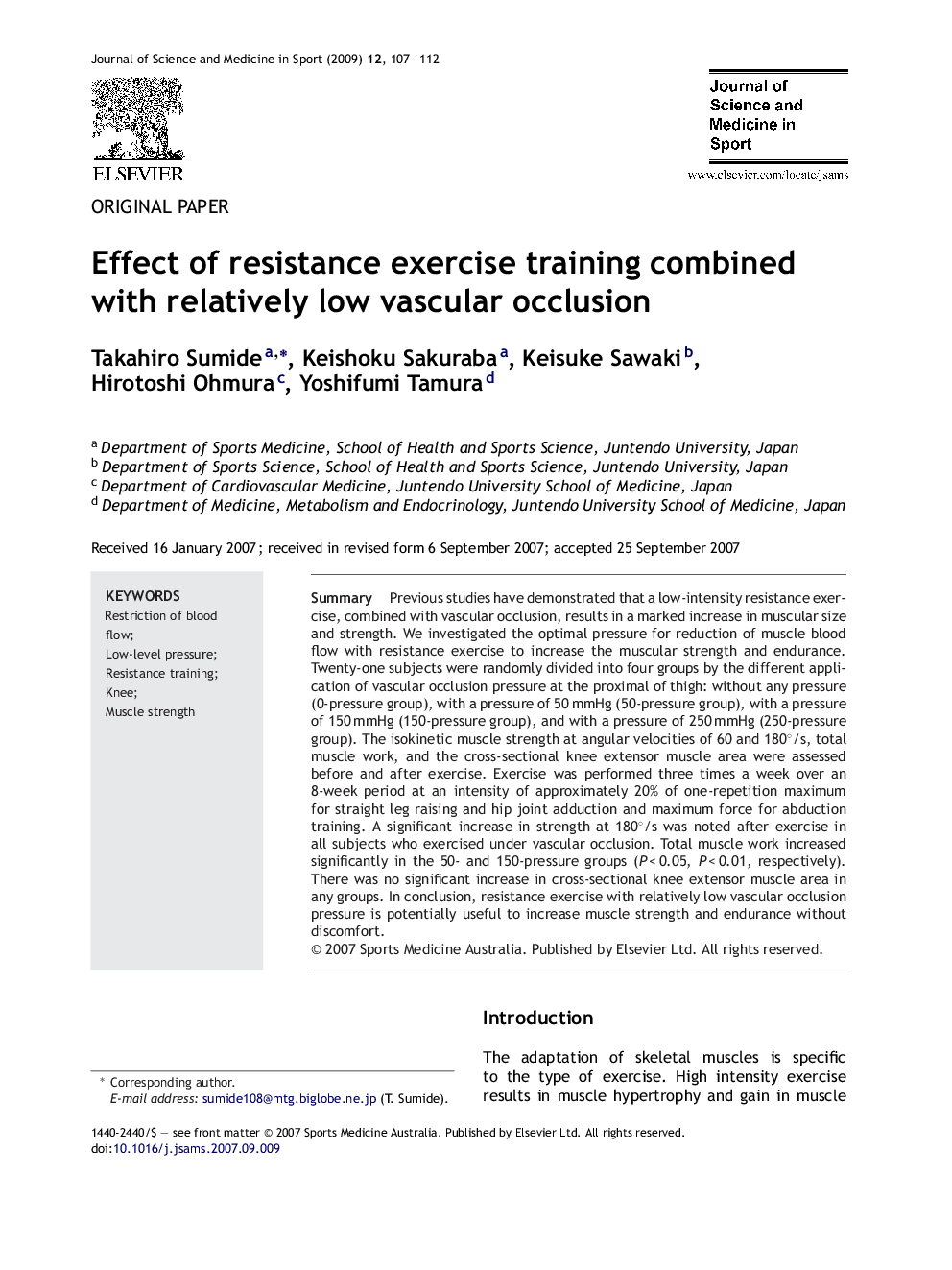| Article ID | Journal | Published Year | Pages | File Type |
|---|---|---|---|---|
| 2708796 | Journal of Science and Medicine in Sport | 2009 | 6 Pages |
SummaryPrevious studies have demonstrated that a low-intensity resistance exercise, combined with vascular occlusion, results in a marked increase in muscular size and strength. We investigated the optimal pressure for reduction of muscle blood flow with resistance exercise to increase the muscular strength and endurance. Twenty-one subjects were randomly divided into four groups by the different application of vascular occlusion pressure at the proximal of thigh: without any pressure (0-pressure group), with a pressure of 50 mmHg (50-pressure group), with a pressure of 150 mmHg (150-pressure group), and with a pressure of 250 mmHg (250-pressure group). The isokinetic muscle strength at angular velocities of 60 and 180°/s, total muscle work, and the cross-sectional knee extensor muscle area were assessed before and after exercise. Exercise was performed three times a week over an 8-week period at an intensity of approximately 20% of one-repetition maximum for straight leg raising and hip joint adduction and maximum force for abduction training. A significant increase in strength at 180°/s was noted after exercise in all subjects who exercised under vascular occlusion. Total muscle work increased significantly in the 50- and 150-pressure groups (P < 0.05, P < 0.01, respectively). There was no significant increase in cross-sectional knee extensor muscle area in any groups. In conclusion, resistance exercise with relatively low vascular occlusion pressure is potentially useful to increase muscle strength and endurance without discomfort.
